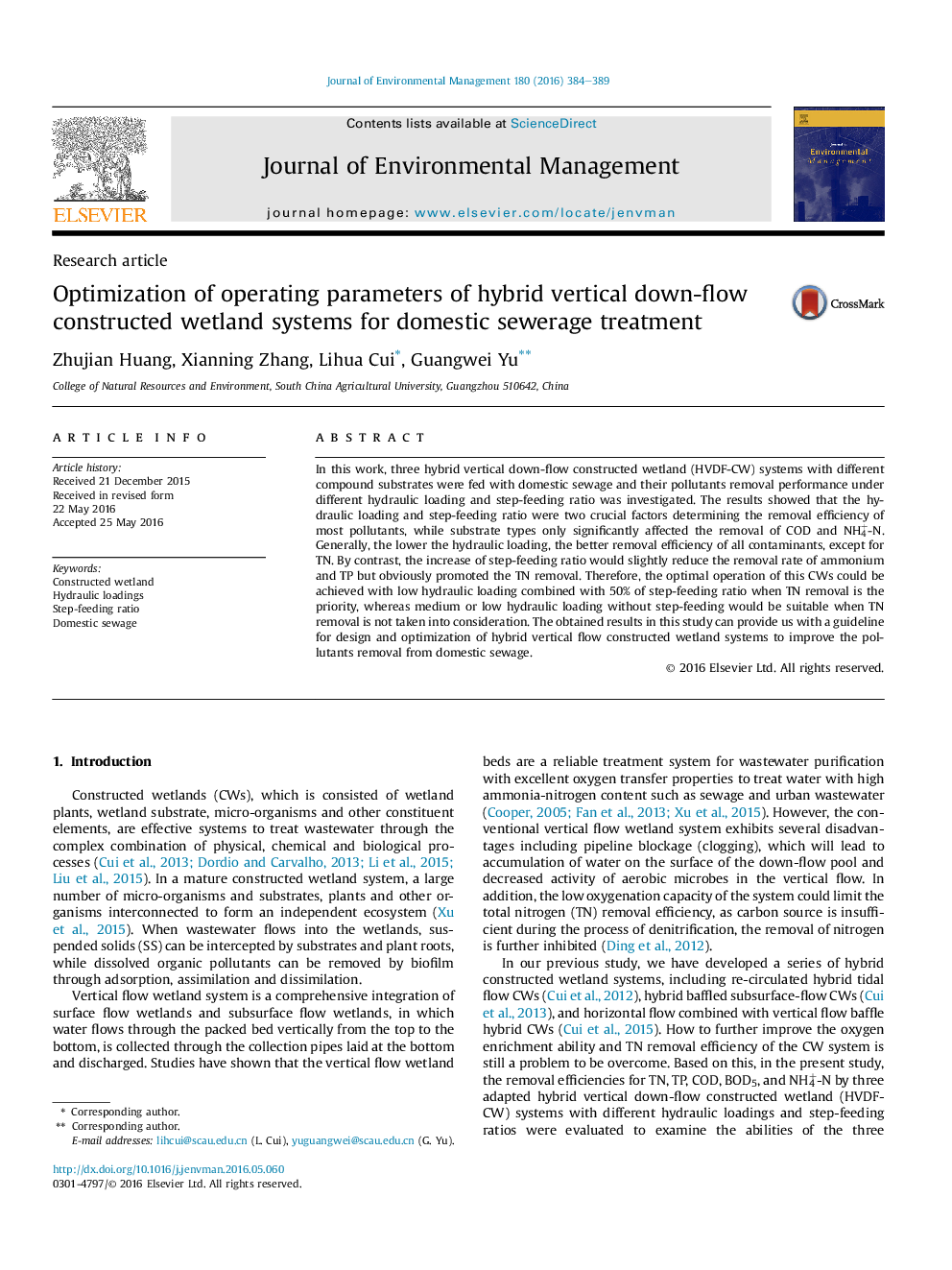| Article ID | Journal | Published Year | Pages | File Type |
|---|---|---|---|---|
| 7480167 | Journal of Environmental Management | 2016 | 6 Pages |
Abstract
In this work, three hybrid vertical down-flow constructed wetland (HVDF-CW) systems with different compound substrates were fed with domestic sewage and their pollutants removal performance under different hydraulic loading and step-feeding ratio was investigated. The results showed that the hydraulic loading and step-feeding ratio were two crucial factors determining the removal efficiency of most pollutants, while substrate types only significantly affected the removal of COD and NH4+-N. Generally, the lower the hydraulic loading, the better removal efficiency of all contaminants, except for TN. By contrast, the increase of step-feeding ratio would slightly reduce the removal rate of ammonium and TP but obviously promoted the TN removal. Therefore, the optimal operation of this CWs could be achieved with low hydraulic loading combined with 50% of step-feeding ratio when TN removal is the priority, whereas medium or low hydraulic loading without step-feeding would be suitable when TN removal is not taken into consideration. The obtained results in this study can provide us with a guideline for design and optimization of hybrid vertical flow constructed wetland systems to improve the pollutants removal from domestic sewage.
Keywords
Related Topics
Physical Sciences and Engineering
Energy
Renewable Energy, Sustainability and the Environment
Authors
Zhujian Huang, Xianning Zhang, Lihua Cui, Guangwei Yu,
